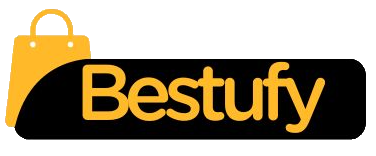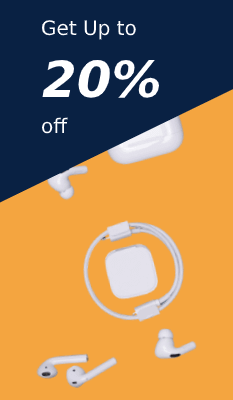To optimize images for on-page SEO, ensure they are appropriately compressed for faster loading times, use descriptive filenames, and provide informative alt tags. By doing so, you can enhance both the user experience and the visibility of your web pages in search engine results. Each offers benefits that can enhance a site’s SEO and user navigation when applied appropriately. Quality and relevance are two key factors contributing to your content’s effectiveness. High-quality, relevant content matches readers’ search intent and is crucial for on-page SEO.
Looking to the future, search engines are exploring ways of using relationships between entities, not just keywords, to determine topical relevance. It further reads the depth of your web pages from the home page itself and even indicates the number of clicks a user does to reach a specific page. Along with this, the interface also distributes different metrics in detailed categories such as ‘Indexation’, ‘Technical’, ‘HTML’, ‘Content’, ‘Links’, and ‘Sitemap’. We list the best on-page SEO tools, to make it simple and easy to make the keywords on your website pages work harder for ranking purposes. To do an On-Page SEO analysis, start by identifying your target keywords. Then, evaluate how well these keywords are integrated into your page titles, headings, and content.
Use Unique, Relevant Meta Descriptions
Pages often rank for keywords related to the subtopics they cover. If you see many top pages ranking for these keywords, it’s probably an important subtopic to cover. This shows our ranking position for the keyword “backlink checker” over time. You can see that in late 2018, we suddenly went from struggling to rank higher than position #5 to consistently ranking #1. The better the experience your site provides, the higher your website can rank. Remove or update outdated external links and only link to quality, trusted and authoritative sites relevant to the topic you’re writing about.
Use heading tags throughout your content to break it up and make it more readable and skimmable for users. In order to show your website in search engine results pages (SERPs), Google has to know what your page is about. Using specific keywords in the title tag of each page makes it easier for search engine crawlers to understand your website. You also want to optimize your pages’ URLs, internal links, SEO Anomaly page speed, and title tags, among others.
What are some common on-page SEO techniques?
Visuals are one on-page SEO element that you can use to improve your site’s ranking. It’s a great way to keep your audience engaged and interested on your page. Google will think that your page is not helpful to your audience, so they will rank your page lower for that keyword. Visual elements will help prevent your audience from immediately bouncing off your page. Visual elements are a key component to keeping leads engaged on your page. They need relief from all the information and visual elements provide that relief.
Although it’s not an official ranking factor for search engines, it can influence whether or not your page is clicked on — therefore, it’s just as important when doing on-page SEO. On-page SEO factors are aspects of your website that you can optimize for better search rankings. It’s about improving things like your technical set-up, your content, and how user-friendly your site is. In this post, we’ll explain all about on-page SEO and how it differs from off-page SEO, and we’ll talk about some on-page optimizations that can help you to rank better.. Keyword ranking tracking involves monitoring webpages’ positions in search engine results for specific keywords. This helps you gauge the effectiveness of your on-page optimization and make necessary adjustments to your strategy.
- A sitemap is a file containing a list of all pages on your site.
- Taking this step will help make the next steps much easier to do as you’ll be able to identify the target keyword (or other search terms) for your pages.
- Your title should be concise yet descriptive, giving both users and search engines a clear understanding of what the page is about.
- When other trusted sites link to your content, it tells search engines that your site is reliable.
- Furthermore, Google recently announced a new system of generating titles for search engine results.
Internal links are links from one page on your site (page A), to another relevant page on your site (page B). Internal link building is one of the most under utilised strategies in SEO, but it’s something you should pay attention to. Test your video schema implementation using Google’s Rich Result Testing tool to ensure that everything is working as it should be. For longer videos, use clip schema to highlight specific sections in your video that can rank independently in the SERPs. Video structured data tells Google what your videos are about, giving them a better chance of appearing as featured snippets or in the video section of the SERPs. If you’ve already uploaded your video to YouTube, you can have YouTube create the transcript by adding closed captions to your videos.
☑ Optimized images
You can also use them to research the keywords you already have on your radar. The first, non-negotiable step toward creating SEO content is to find out what terms your audience is searching using search engines. Ranking higher in search results increases your website’s visibility, driving more clicks from users actively searching for your content, products, or services. Unlike paid advertising, this traffic is sustainable and grows when you maintain optimization efforts. So it’s not all about structured data (aka schema markup), identifying crawl errors or optimizing content alone – these seemingly trivial elements are also worth your time and effort.
Use the following checklist as a starting point to evaluate the essential on-page SEO factors on your landing pages. On the other hand, off-page SEO focuses on factors outside your website and involves optimization tactics such as link building, guest posting, brand mentions, and so on. By optimizing on-page elements, you enhance your site’s relevance and authority, leading to better visibility in search results. Addressing these factors can significantly improve your site’s visibility and user engagement.
Similarly, when it comes to adding your keyword to more subheadings, use your own judgment. If adding it will make for an awkward read, then skip the recommendation. We’ll walk you through how to implement proven on-page techniques to boost your rankings, traffic, and conversions. ” isn’t confined to a specific date, it’s best to host on a non-dated URL structure or else risk your information appearing stale. To ensure that Google can crawl and index your images, submit an image sitemap in your Google Search Console account. This helps Google discover images they may have otherwise missed.







Leave a Reply